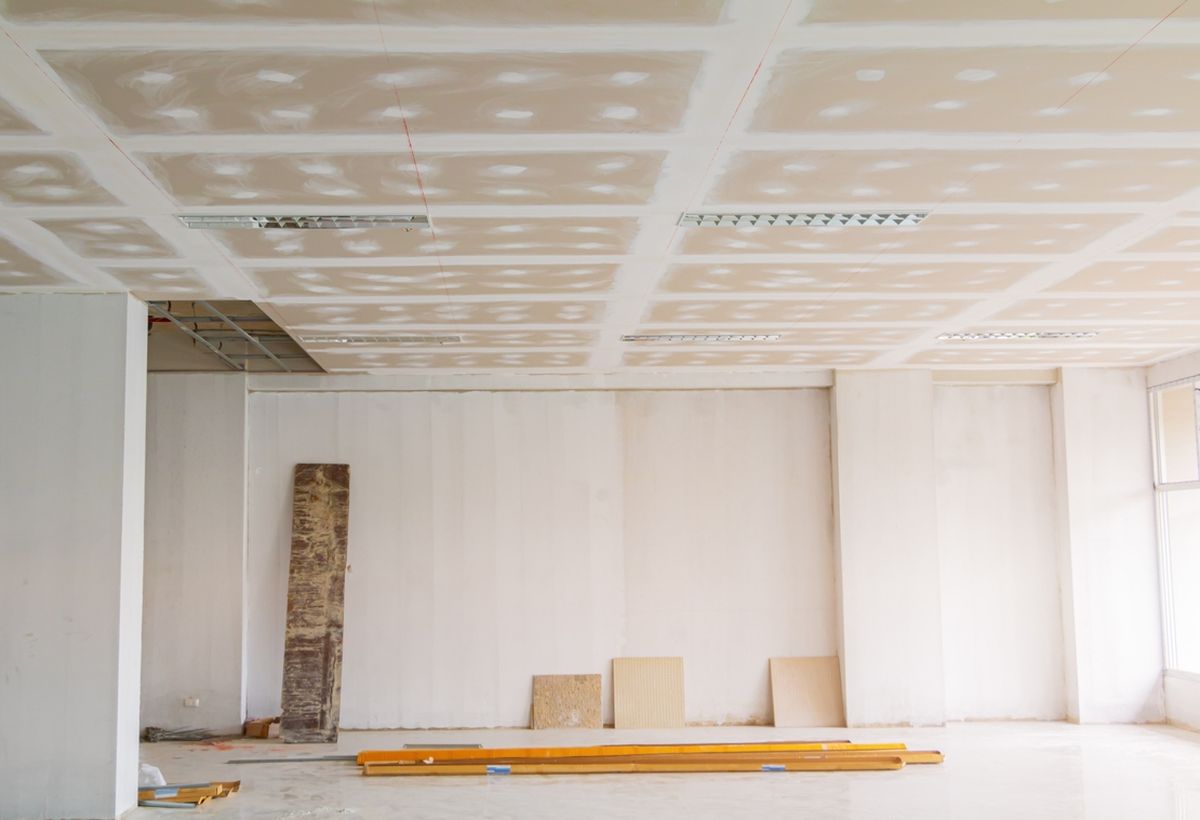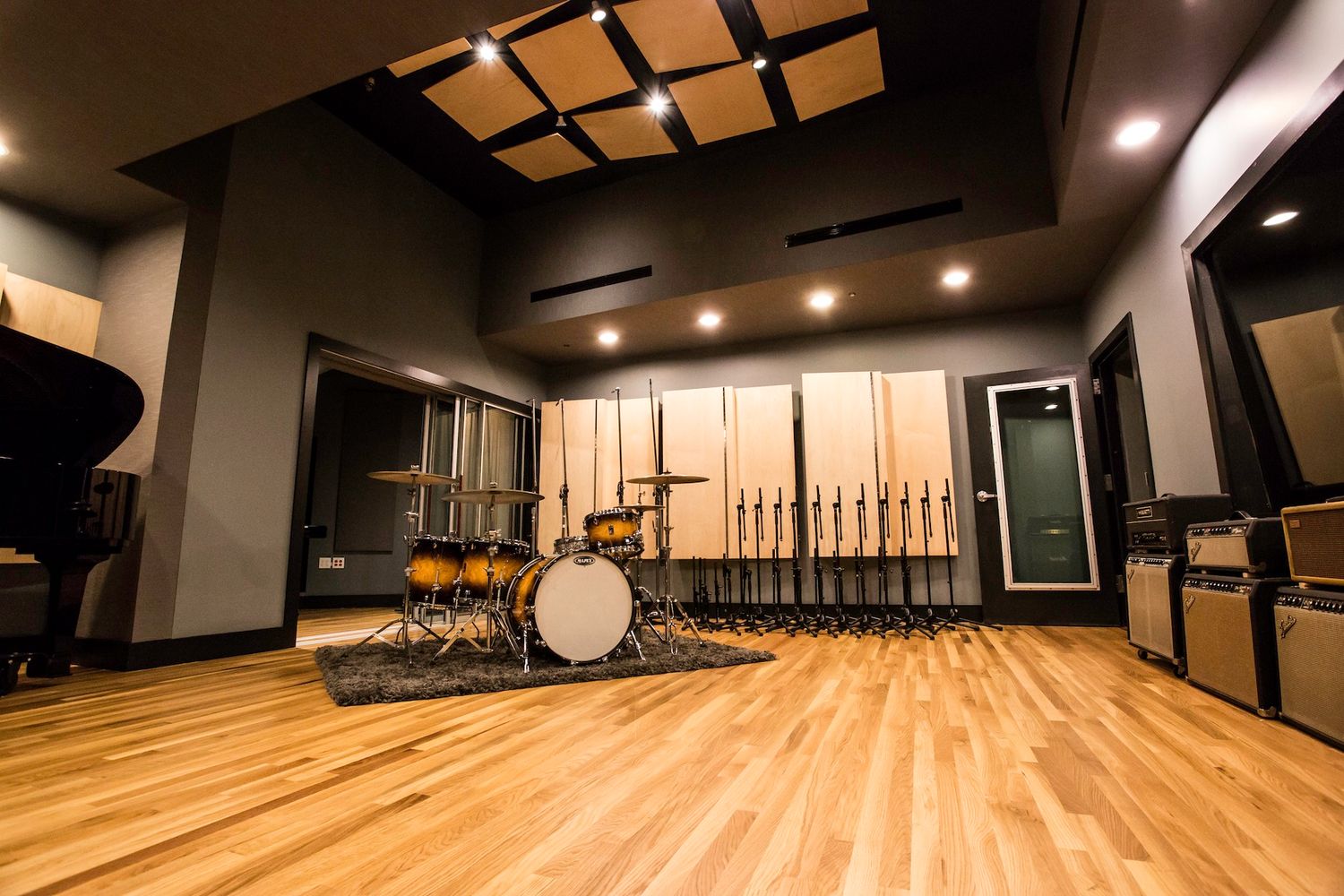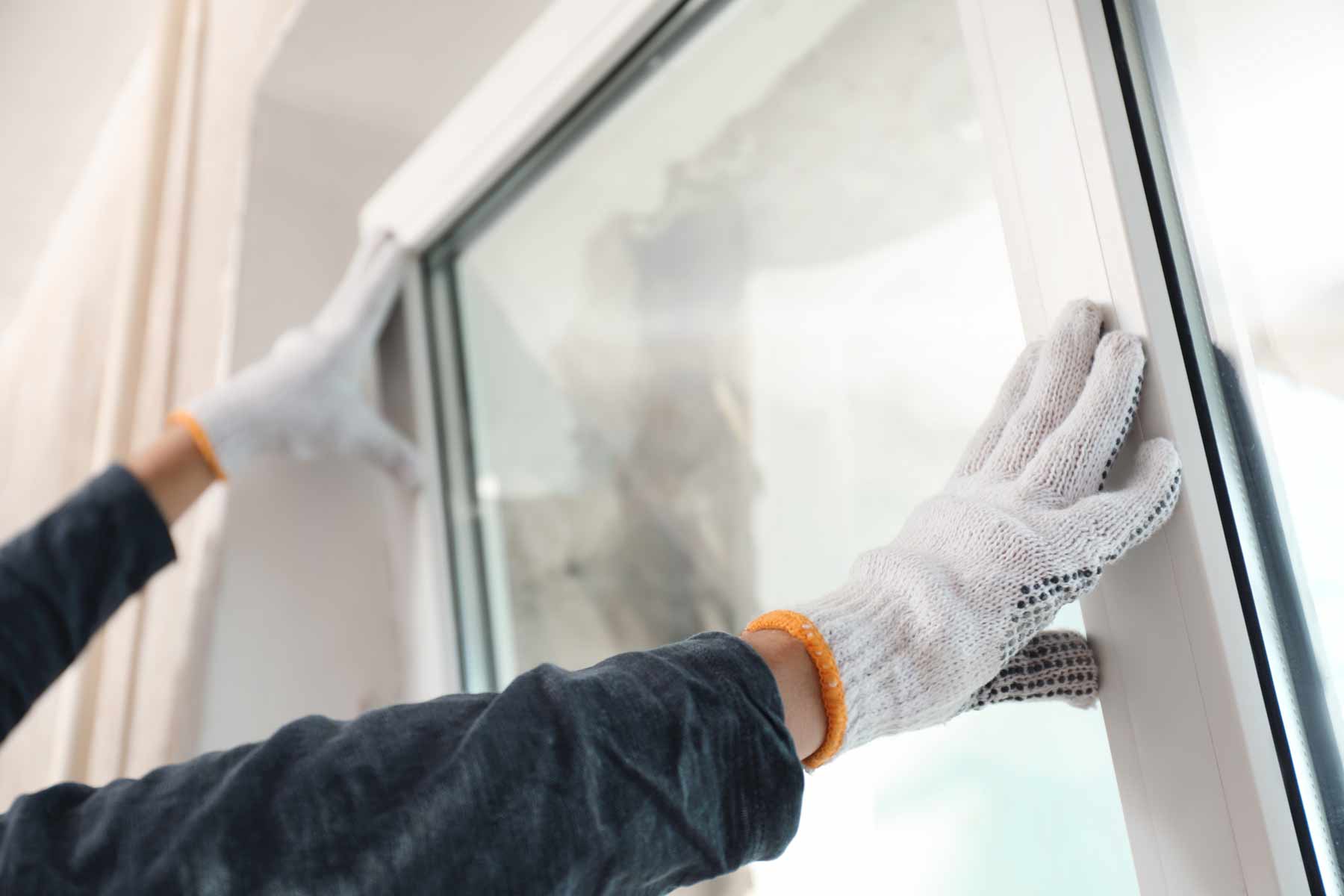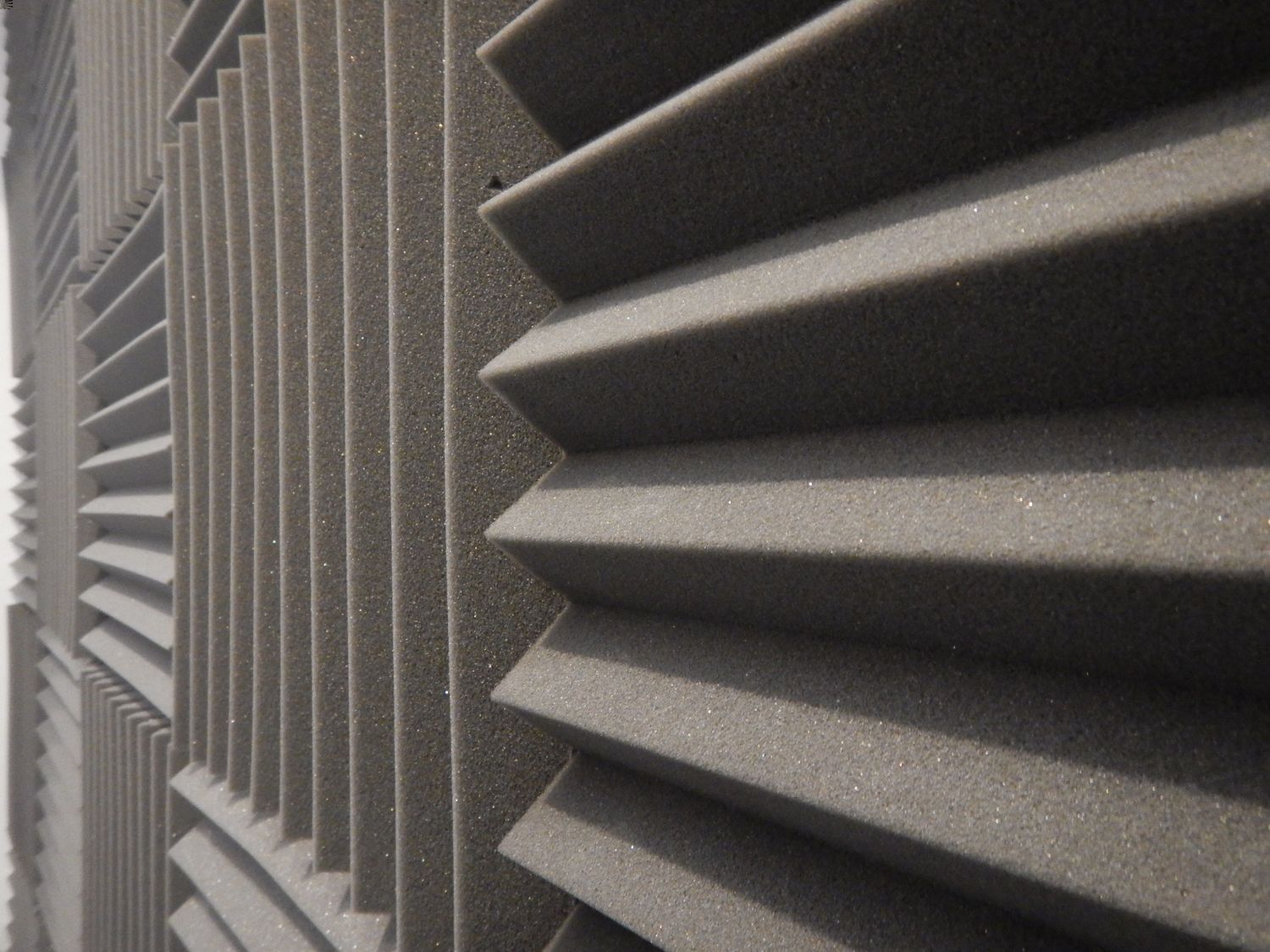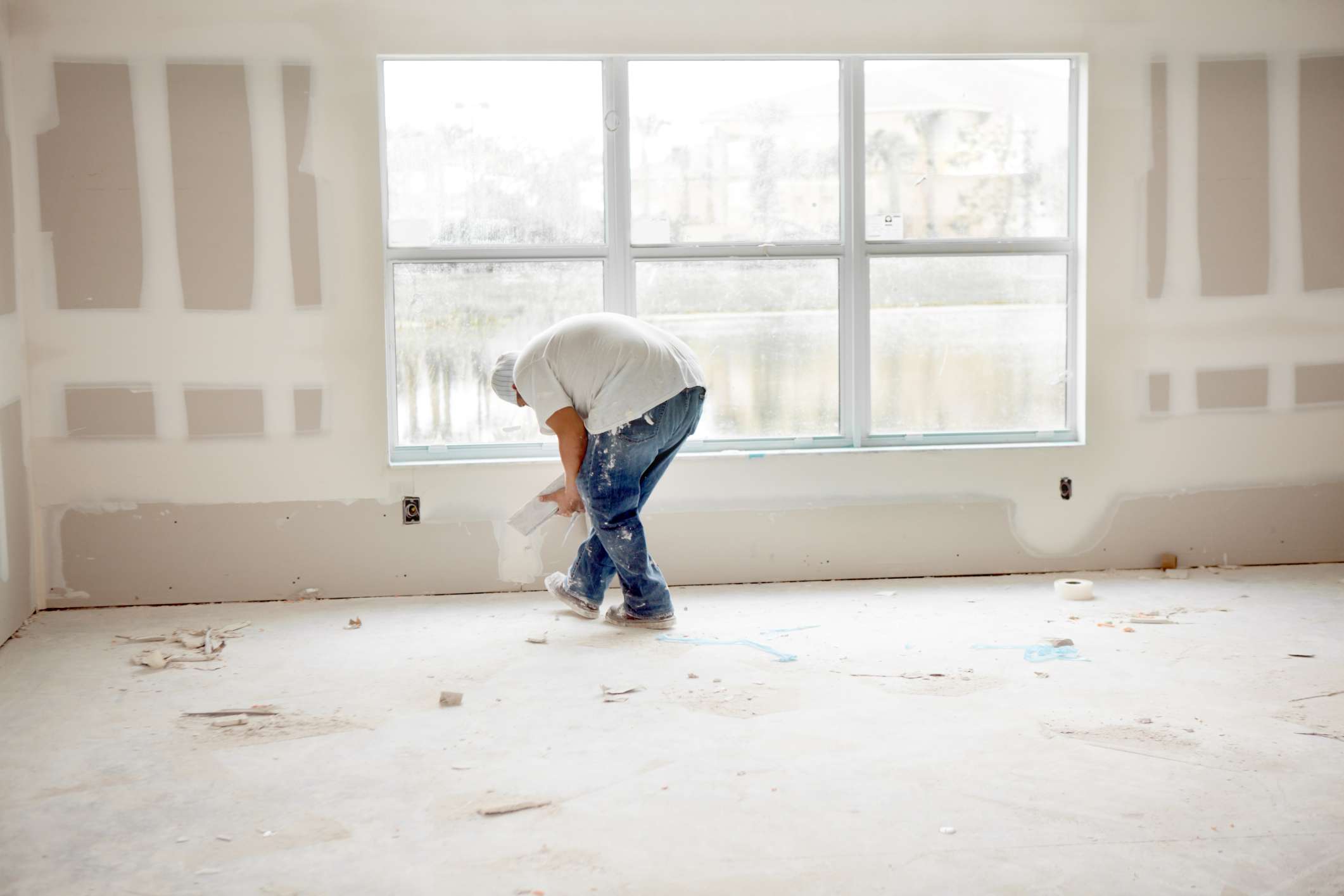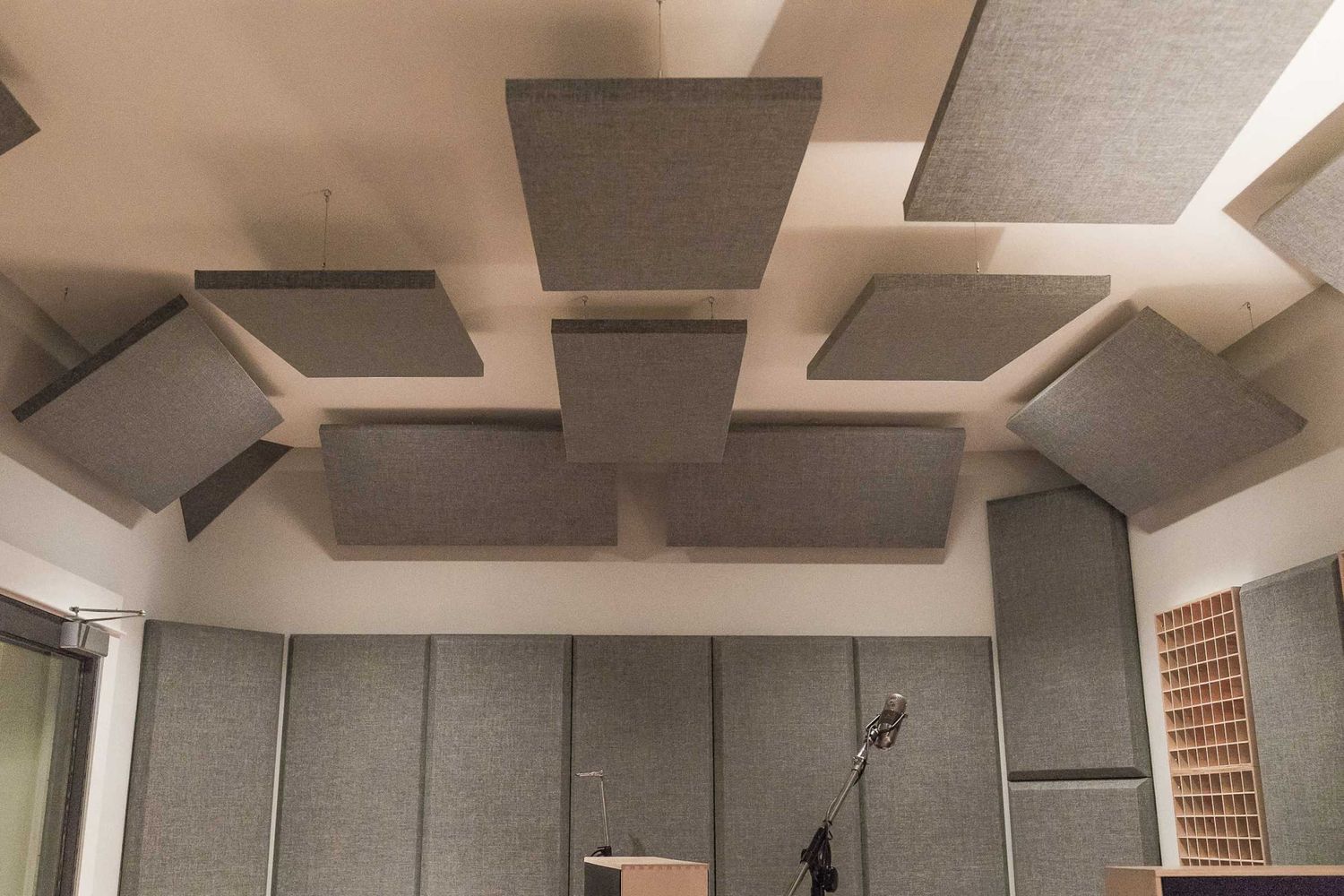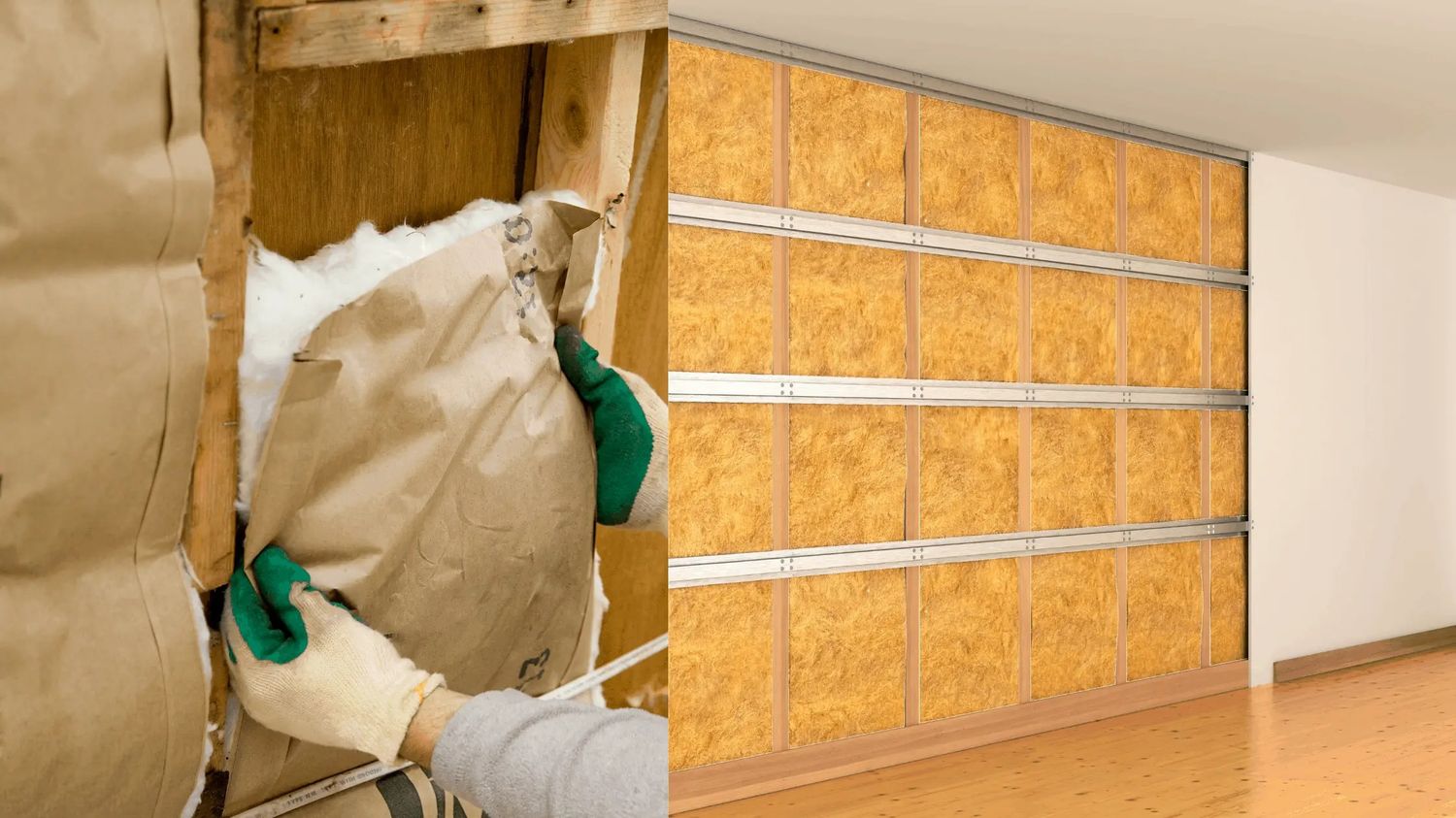Home>Production & Technology>Soundproofing>How To Use Rockwool For Soundproofing


Soundproofing
How To Use Rockwool For Soundproofing
Published: January 26, 2024
Learn how to effectively use Rockwool for soundproofing your space. Get expert tips and techniques for a quieter and more peaceful environment.
(Many of the links in this article redirect to a specific reviewed product. Your purchase of these products through affiliate links helps to generate commission for AudioLover.com, at no extra cost. Learn more)
Table of Contents
- Introduction
- What is Rockwool?
- The Benefits of Using Rockwool for Soundproofing
- Selecting the Right Type of Rockwool for Soundproofing
- Preparing the Space for Rockwool Installation
- Installing Rockwool for Soundproofing
- Proper Maintenance and Care of Rockwool for Soundproofing
- Common Mistakes to Avoid when Using Rockwool for Soundproofing
- Conclusion
Introduction
Welcome to the world of soundproofing! Whether you’re dealing with noisy neighbors, loud traffic, or a home studio that needs to keep sound contained, finding ways to reduce unwanted noise can greatly improve your quality of life.
When it comes to soundproofing materials, one highly effective option is Rockwool. This versatile material not only helps to block and absorb sound but also offers a range of other benefits. In this article, we will explore how to use Rockwool for soundproofing and discuss its many advantages.
Rockwool is a brand name for a type of mineral wool made from volcanic rock fibers. It is known for its excellent sound absorption properties and thermal insulation qualities. The material is dense and fibrous, making it effective at reducing the transmission of sound waves. Additionally, it is fire-resistant and has good moisture resistance, making it suitable for a variety of soundproofing applications.
Using Rockwool for soundproofing can provide numerous benefits. First and foremost, it offers exceptional noise reduction capabilities. The dense texture and tight fibers help to absorb sound waves, effectively reducing noise pollution. This makes it an ideal choice for homeowners, musicians, and anyone looking to create a quiet and peaceful environment.
Besides its sound-absorbing properties, Rockwool also provides thermal insulation. It can help regulate the temperature within a space by preventing heat transfer, keeping the room cooler in summer and warmer in winter. This added benefit can contribute to energy efficiency and cost savings, making it a valuable investment for your property.
Furthermore, Rockwool is resistant to fire, thanks to its high melting point. This makes it a safe choice for soundproofing in areas prone to fire hazards or where fire safety is a concern. Additionally, it is non-combustible and doesn’t produce toxic smoke when exposed to high temperatures.
Another advantage of using Rockwool for soundproofing is its durability. Unlike other soundproofing materials that may deteriorate over time, Rockwool maintains its structural integrity for years. It is resistant to mold, mildew, and pests, making it a long-lasting solution.
In the following sections, we will explore the different types of Rockwool available for soundproofing, discuss how to prepare the space for installation, provide step-by-step instructions for installing Rockwool, and share tips for proper maintenance and common mistakes to avoid. By the end of this article, you will have a thorough understanding of how to effectively use Rockwool for soundproofing.
What is Rockwool?
Rockwool, also known as mineral wool, is a type of insulation material that is specially designed for soundproofing purposes. It is made from volcanic rock fibers, which are melted down and then spun into thin threads. These threads are then compressed and formed into dense panels or batts that can be easily installed in walls, ceilings, or floors.
The main attribute of Rockwool that makes it an excellent soundproofing material is its ability to absorb sound waves. The numerous air pockets and irregular fibers in Rockwool effectively trap sound energy and prevent it from transmitting through walls or other surfaces. This makes it an effective solution for reducing noise pollution from both external sources and internal sources within a building.
In addition to its sound-absorbing properties, Rockwool also offers thermal insulation benefits. The dense and fibrous nature of the material helps to create a barrier to heat transfer, making it an energy-efficient solution. It can help keep your home warm in the winter and cool in the summer, reducing your reliance on heating and cooling systems and ultimately lowering your energy bills.
One of the key advantages of Rockwool is its fire-resistant properties. It has a high melting point, which means it can withstand extreme temperatures without catching fire. This makes it a safe choice for soundproofing applications in buildings where fire safety is a concern. Additionally, Rockwool is non-combustible and does not release toxic smoke when exposed to fire, providing an extra layer of protection.
Rockwool is also known for its durability and longevity. Unlike some other soundproofing materials that may degrade or lose their effectiveness over time, Rockwool maintains its performance and structural integrity for many years. It is resistant to moisture, mold, and pests, ensuring that it will continue to provide soundproofing benefits for a long time.
Another advantage of Rockwool is its versatility in application. It can be easily cut and shaped to fit into various spaces, allowing for customized soundproofing solutions. Whether you need to soundproof a single room, an entire building, or even a home theater, Rockwool can be adapted to suit your specific needs.
In summary, Rockwool is a highly effective soundproofing material that offers a range of additional benefits. It provides excellent sound absorption, thermal insulation, fire resistance, durability, and versatility. Whether you’re looking to create a peaceful home environment, improve the acoustics of a recording studio, or enhance the soundproofing of a commercial space, Rockwool is a reliable solution to consider.
The Benefits of Using Rockwool for Soundproofing
Rockwool is a highly effective soundproofing material that offers numerous benefits. Here are some of the key advantages of using Rockwool for soundproofing:
- Excellent Sound Absorption: Rockwool is known for its exceptional sound absorption capabilities. The dense and fibrous composition of the material helps to trap and absorb sound waves, reducing noise pollution and creating a quieter environment. Whether you’re dealing with outside traffic noise, loud neighbors, or internal echoes, Rockwool can significantly improve the acoustics of your space.
- Thermal Insulation: In addition to soundproofing, Rockwool also provides thermal insulation benefits. The dense structure of Rockwool helps to minimize heat transfer through walls, floors, and ceilings. This effectively regulates the temperature within a room, keeping it cooler in the summer and warmer in the winter. By reducing heat loss or gain, Rockwool can contribute to energy efficiency and lower heating and cooling costs.
- Fire Resistance: Rockwool is highly fire-resistant, making it a safe choice for soundproofing applications. It has a high melting point, which means it can withstand extreme temperatures without catching fire. This property can be particularly valuable in areas where fire hazards are a concern or in buildings where fire safety is a priority. Additionally, Rockwool is non-combustible and does not release toxic smoke when exposed to fire.
- Durable and Long-lasting: Rockwool is a durable soundproofing material that maintains its effectiveness and structural integrity over time. It is resistant to mold, mildew, and pests, ensuring that it will continue to provide reliable soundproofing benefits for years. Unlike some other materials that may degrade or need to be replaced, Rockwool offers long-term peace of mind.
- Versatility: Rockwool can be easily customized and adapted to different soundproofing applications. It can be cut and shaped to fit into various spaces, allowing for a tailored soundproofing solution. Whether you’re soundproofing a home theater, recording studio, office, or residential space, Rockwool can be adjusted to meet your specific needs.
Overall, using Rockwool for soundproofing offers a range of benefits. It not only effectively reduces noise pollution but also provides thermal insulation, fire resistance, durability, and versatility. Whether you’re looking to create a peaceful home environment, improve the acoustics of a commercial space, or enhance the soundproofing of a professional studio, Rockwool is a reliable and effective solution.
Selecting the Right Type of Rockwool for Soundproofing
When it comes to soundproofing with Rockwool, selecting the right type of insulation is crucial to achieve optimal results. Here are some factors to consider when choosing the right type of Rockwool for your soundproofing needs:
- Density: The density of the Rockwool insulation plays a significant role in its soundproofing capabilities. Generally, higher density Rockwool panels offer better sound absorption. The denser the material, the more sound waves it can trap and attenuate. Consider the noise level you’re trying to block and select a Rockwool insulation with an appropriate density.
- Thickness: The thickness of the Rockwool insulation can also affect its soundproofing performance. Thicker insulation provides better sound absorption because it has more material for sound waves to pass through and be absorbed by. Consider the space you’re soundproofing, and choose a Rockwool thickness that can effectively reduce noise transmission.
- Type of Rockwool: Rockwool insulation comes in different forms, including batts, rigid panels, and loose-fill. Batts are pre-cut panels that fit between wall studs, while rigid panels are solid boards that can be mounted on walls or ceilings. Loose-fill Rockwool is loose fibers that can be blown into cavities or voids. Consider the specific application and installation method you need, and choose the appropriate type of Rockwool insulation.
- Acoustic Ratings: Some Rockwool products may have acoustic ratings or certifications. These ratings provide information about the sound absorption capabilities of the insulation. Look for products that have been tested and certified for their acoustic performance to ensure they meet your soundproofing needs.
- Fire Resistance: If fire safety is a concern in your soundproofing project, consider selecting Rockwool insulation with high fire resistance properties. Look for products that are specifically designed for fire protection and have appropriate fire-resistant ratings.
- Budget and Availability: Finally, consider your budget and the availability of Rockwool insulation in your area. Compare prices from different suppliers and choose a product that offers a good balance of quality and affordability. Additionally, ensure that the desired type and density of Rockwool insulation are readily available to avoid delays in your soundproofing project.
It’s also worth mentioning that consulting with a professional soundproofing expert can be beneficial. They can assess your specific soundproofing needs, evaluate the space, and recommend the most suitable Rockwool insulation for your project. Their expertise can help you make an informed decision and achieve the best possible soundproofing results.
By considering factors such as density, thickness, type, acoustic ratings, fire resistance, budget, and availability, you can select the right type of Rockwool insulation for your soundproofing needs. Remember, choosing the appropriate Rockwool insulation is essential to ensure effective noise reduction and create a peaceful and quiet environment.
Preparing the Space for Rockwool Installation
Before installing Rockwool for soundproofing, it’s important to properly prepare the space to ensure a successful and effective installation. Here are some steps to follow when preparing the space for Rockwool installation:
- Clean the Area: Start by cleaning the area where you plan to install Rockwool. Remove any dust, debris, or existing insulation materials that may be present. A clean and smooth surface will ensure better adhesion and maximize the soundproofing capabilities of the Rockwool.
- Seal Air Leaks: Inspect the space for any air leaks or gaps that could compromise the soundproofing performance. Use caulk or weatherstripping to seal any cracks, holes, or gaps in walls, windows, or doors. By sealing these air leaks, you can prevent sound from leaking into or out of the space.
- Examine Electrical Outlets and Fixtures: Take note of any electrical outlets, switches, or light fixtures on the walls or ceilings where Rockwool will be installed. Ensure that these fixtures are mounted securely and do not pose any safety hazards. If necessary, consult an electrician to make any adjustments or modifications before proceeding with the installation.
- Measure and Mark: Measure the area where you will install Rockwool and mark the dimensions accordingly. It’s important to accurately measure the length, width, and height of the space to ensure a precise fit. Use a tape measure, level, and pencil to mark the installation area, making it easier to cut and fit the Rockwool insulation.
- Protective Gear: Before handling Rockwool insulation, make sure to wear appropriate protective gear. This includes gloves, safety goggles, and a dust mask or respirator. Rockwool insulation can have sharp edges and may release particles when cut or handled, so proper protection is essential.
- Consider Vapor Barrier: Depending on the specific installation requirements and the moisture levels in the space, you may need to install a vapor barrier before placing Rockwool insulation. A vapor barrier helps to prevent the passage of moisture, protecting the insulation from potential damage. Consult a professional if you are unsure whether a vapor barrier is necessary for your project.
- Plan for Electrical and Plumbing: If there are electrical or plumbing fixtures in the area where Rockwool will be installed, plan for their accessibility. Consider how to accommodate these fixtures in the insulation and leave openings or access points for future maintenance or repairs.
By properly preparing the space for Rockwool installation, you can ensure a smooth and effective soundproofing process. Cleaning the area, sealing air leaks, examining electrical fixtures, measuring and marking the installation area, wearing protective gear, considering a vapor barrier, and planning for electrical and plumbing can all contribute to a successful installation and long-lasting soundproofing results.
Remember, if you are unsure about any aspect of the preparation process, it’s always recommended to consult with a professional soundproofing expert. They can provide guidance and ensure that the space is adequately prepared for the installation of Rockwool insulation.
Installing Rockwool for Soundproofing
Installing Rockwool insulation for soundproofing purposes requires careful attention to detail to ensure maximum effectiveness. Here is a step-by-step guide on how to install Rockwool for soundproofing:
- Measure and Cut: Start by measuring the dimensions of the space where the Rockwool insulation will be installed. Use a utility knife or insulation cutter to cut the Rockwool panels or batts to fit the measured space accurately.
- Wear Protective Gear: Before handling the Rockwool insulation, ensure that you are wearing appropriate protective gear such as gloves, safety goggles, and a dust mask. This will protect you from any irritants or sharp edges of the insulation.
- Place the Insulation: Position the cut Rockwool insulation into the desired space, ensuring a snug fit. Press the insulation firmly against the surface, ensuring that there are no gaps or spaces between the insulation and the wall, ceiling, or floor.
- Secure the Insulation: If necessary, secure the Rockwool insulation in place using insulation supports or adhesive. These can help keep the insulation in place and prevent it from sagging or shifting over time.
- Seal Seams and Gaps: Inspect the installed Rockwool insulation for any seams or gaps that may have been left during the installation process. Use a specialized insulation sealant or tape to seal any seams or gaps, ensuring an airtight and soundproof barrier.
- Address Electrical and Plumbing Fixtures: In spaces where there are electrical outlets, switches, or plumbing fixtures, make necessary cuts or openings in the Rockwool insulation to accommodate these fixtures. Ensure that these areas are properly sealed after installation to maintain the integrity of the soundproofing barrier.
- Maintain Clear Access Points: It is important to maintain clear access points to electrical and plumbing fixtures even after the insulation is installed. This will allow for future maintenance or repairs without compromising the soundproofing barrier. Consider using removable insulation panels or access doors for easy access.
- Continue Installation: Repeat the process of measuring, cutting, and installing Rockwool insulation for each section until the entire desired space is covered. Take care to ensure a consistent and even installation throughout the area.
It is worth noting that for certain installations, such as covering ceilings or soundproofing in existing walls, professional assistance may be beneficial. They can provide expertise in tackling complex installations and ensure that the Rockwool insulation is installed correctly.
By following these steps, you can successfully install Rockwool insulation for soundproofing. The proper installation of Rockwool will contribute to creating a quieter and more peaceful environment by effectively reducing noise transmission from both external and internal sources.
Proper Maintenance and Care of Rockwool for Soundproofing
Proper maintenance and care of Rockwool insulation is essential to ensure its longevity and continued effectiveness in soundproofing your space. Here are some tips on how to maintain and care for Rockwool insulation:
- Avoid Moisture Exposure: Rockwool insulation is resistant to moisture, but prolonged exposure to water or excessive humidity can compromise its performance. Prevent water leaks or excessive moisture buildup in the area where the insulation is installed. Address any plumbing issues promptly and ensure proper ventilation to minimize moisture-related problems.
- Inspect for Damage: Regularly inspect the Rockwool insulation for any signs of damage or deterioration. Look for areas where the insulation may have shifted, compressed, or become dislodged. If you notice any damage, reposition or replace the affected insulation to maintain its effectiveness.
- Check for Pest Infestation: Rockwool insulation is resistant to pests, but it’s still essential to monitor for signs of infestation. Inspect the insulation for any evidence of pest activity, such as droppings or damage. If you suspect a pest problem, consult a professional pest control service to address the issue promptly.
- Maintain Clear Air Vents: Ensure that air vents and grilles are not obstructed by the Rockwool insulation. Proper airflow is crucial for maintaining indoor air quality and preventing moisture buildup. Keep the vents clear to allow for adequate ventilation throughout the space.
- Keep the Insulation Clean: While Rockwool insulation is less prone to collecting dust or allergens compared to some other materials, it’s still important to keep it clean. Regularly vacuum or lightly brush the surface of the insulation to remove any accumulated dust or debris. This will help maintain its sound-absorbing properties.
- Be Mindful of Fire Safety: Although Rockwool is fire-resistant, it’s important to be mindful of fire safety in the installed area. Avoid placing flammable materials near the insulation and take precautions against any potential fire hazards to ensure the safety and longevity of the Rockwool insulation.
- Address Odor Issues: In some cases, newly installed Rockwool insulation may emit a temporary odor known as “off-gassing.” This odor should dissipate over time, but if it persists or becomes problematic, consider improving ventilation in the space or consult a professional for further advice.
- Seek Professional Assistance: If you notice any significant issues or have concerns about the maintenance or care of your Rockwool insulation, it’s always advisable to consult with a professional soundproofing expert. They can provide guidance specific to your situation and help address any issues that may arise.
By following these maintenance tips and caring for your Rockwool insulation, you can prolong its lifespan and maintain its soundproofing effectiveness. Regular inspections, addressing damage or pest issues, maintaining clear air vents, keeping the insulation clean, and practicing good fire safety measures are all important aspects of Rockwool insulation maintenance.
Remember, proper maintenance and care are key to ensuring optimal soundproofing performance and creating a quiet and peaceful environment in your space.
Common Mistakes to Avoid when Using Rockwool for Soundproofing
When using Rockwool insulation for soundproofing, it’s important to be aware of common mistakes that can impact its effectiveness. Here are some key mistakes to avoid when using Rockwool for soundproofing:
- Insufficient Coverage: One common mistake is not covering the entire area adequately with Rockwool insulation. Leaving gaps or areas without insulation can compromise the soundproofing barrier and allow noise to pass through. Ensure thorough and even coverage to achieve optimal results.
- Improper Installation: Improper installation can diminish the soundproofing capabilities of Rockwool. Avoid compressing the insulation too much, as this can reduce its effectiveness. Additionally, ensure that the insulation fits securely and tightly against the surrounding surfaces, leaving no gaps or spaces that could allow sound to pass through.
- Ignoring Air Leaks: Neglecting to address air leaks can undermine the effectiveness of Rockwool insulation. Identify and seal any cracks, gaps, or openings in walls, windows, and doors that could allow sound to bypass the insulation. Properly sealing these air leaks is essential to create an airtight sound barrier.
- Failure to Consider Acoustic Ratings: Acoustic ratings provide valuable information about the sound absorption capabilities of Rockwool insulation. Ignoring these ratings may result in selecting an insulation product that does not meet your specific soundproofing needs. Consider the acoustic ratings of different Rockwool options and choose one that is suitable for your requirements.
- Not Addressing Electrical and Plumbing Fixtures: Failing to plan for electrical outlets, switches, or plumbing fixtures during the installation process can lead to difficulties and compromise the soundproofing barrier. Make necessary cuts or openings in the Rockwool insulation to accommodate these fixtures while maintaining proper insulation and soundproofing integrity.
- Using Inadequate Protective Gear: Rockwool insulation can be irritating to the skin, eyes, and respiratory system. Neglecting to wear appropriate protective gear such as gloves, safety goggles, and a dust mask can put your health at risk. Always use the necessary protective equipment when handling Rockwool insulation.
- Not Consulting Professionals: Soundproofing projects can be complex, and it is beneficial to seek advice from professionals. Avoiding professional input can lead to suboptimal results and potential mistakes. Consulting soundproofing experts can help ensure that the proper techniques and materials are used for your specific soundproofing needs.
By being mindful of these common mistakes and taking steps to avoid them, you can ensure that your Rockwool insulation is installed and utilized correctly for effective soundproofing. Proper coverage, installation techniques, addressing air leaks, considering acoustic ratings, accommodating fixtures, using protective gear, and seeking professional advice are all important factors to keep in mind.
Conclusion
In conclusion, Rockwool insulation is a highly effective and versatile solution for soundproofing. Its ability to absorb sound waves and reduce noise pollution makes it a valuable asset in creating a quiet and peaceful environment. Additionally, Rockwool offers thermal insulation, fire resistance, durability, and versatility, further enhancing its appeal as a soundproofing material.
When using Rockwool for soundproofing, it is crucial to select the right type of insulation based on factors such as density, thickness, and acoustic ratings. Proper preparation of the space, including cleaning, sealing air leaks, and examining fixtures, sets the stage for a successful installation.
During the installation process, it is important to follow proper techniques, including measuring, cutting, and securing the Rockwool insulation in place. Regular maintenance and care, such as addressing damage, inspecting for pests, and keeping the insulation clean, will ensure its longevity and continued effectiveness.
Avoiding common mistakes, such as insufficient coverage, improper installation, ignoring air leaks, and neglecting to consider acoustic ratings, is crucial in maximizing the soundproofing benefits of Rockwool insulation. Seeking professional assistance and using appropriate protective gear are additional measures that contribute to successful soundproofing projects.
Incorporating Rockwool insulation into your soundproofing efforts can significantly improve the acoustics of your space and enhance your overall quality of life. By understanding the benefits, selecting the right type, performing proper installation, and maintaining the insulation, you can create a quiet and peaceful environment free from unwanted noise.
Remember, soundproofing projects can be complex, and seeking the guidance of professionals can provide valuable expertise and ensure the best possible soundproofing results. With the right techniques and careful consideration, Rockwool insulation can be a valuable investment in achieving the serenity and tranquility you desire in your living or working space.


